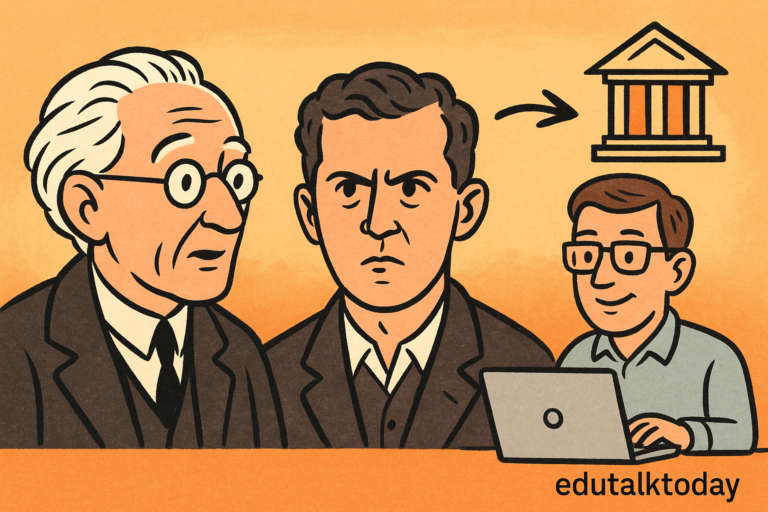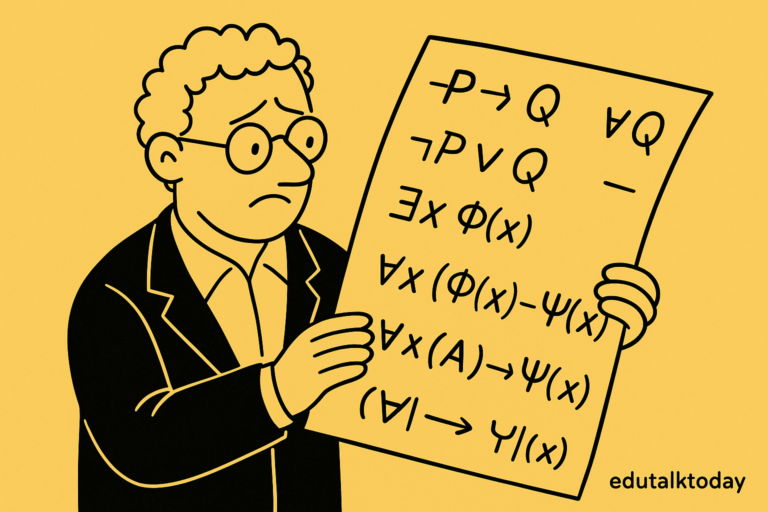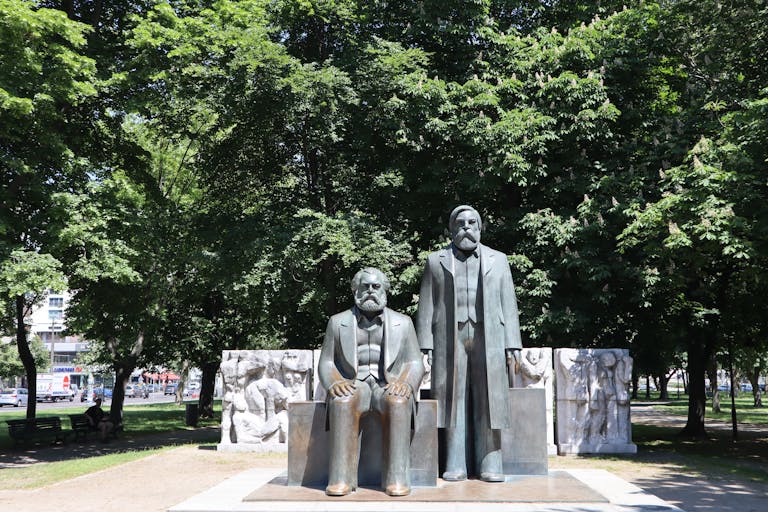Understanding Descartes’ Unified Self to Lacan’s Fragmented Identity in Continental Thought

When I think about how people have imagined the “self” over the centuries, it’s kind of wild. Today, most of us take it for granted that our identity is messy, layered, and even contradictory.
But back in the 17th century, thinkers like René Descartes were obsessed with certainty, stability, and unity. They wanted to find something solid that couldn’t be doubted, and for Descartes, that “something” was the self. Fast forward a few hundred years, though, and suddenly you’ve got Freud poking holes in the idea with his talk of unconscious drives, and Lacan going even further, suggesting we’re fragmented beings by design.
It’s a fascinating story because it shows how the “self” isn’t just some natural fact—it’s an idea that evolves. And if ideas about who we are can shift this much, it makes you wonder: what comes next?
Descartes and the idea of a unified self
If you’ve ever heard the phrase “I think, therefore I am,” you’ve already brushed up against René Descartes’ philosophy. This little sentence is one of the most famous in history, and for good reason. Descartes was living during a time when old certainties—religion, tradition, authority—were starting to crack. Science was exploding, and the world suddenly looked a lot less stable than it once had. Descartes wanted something unshakable to build knowledge on, and he found it in the act of thinking itself.
When he said “I think, therefore I am,” what he meant was that no matter how much he doubted, he couldn’t doubt the fact that he was doubting. And if he was doubting, he must exist as a thinking being. Sounds a bit circular, right? But it was brilliant. It gave him a solid foundation: the self as a rational, unified thinker.
Why unity mattered so much
Now, why was this idea of unity such a big deal? Think about it. If you believe your mind is a single, coherent center of control, it means you can trust your reason. You’re not just at the mercy of your senses (which can deceive you) or the whims of external authority. Instead, you’ve got this built-in anchor: your rational mind. That’s powerful.
This vision of a unified self didn’t stay in philosophy classrooms either—it shaped culture. Enlightenment thinkers leaned hard on it. The idea of the autonomous individual—someone who can think clearly, make choices, and pursue freedom—comes straight out of this. It even underpins political revolutions. The notion that every person has the capacity to reason helped fuel arguments for democracy and human rights.
A relatable example
To put it in more everyday terms, imagine you’re trying to figure out whether you left your phone at home or at a café. You doubt your memory, you doubt the café’s lost-and-found policy, but in that moment of doubting, Descartes would say: you can’t doubt that you exist as the one doing the doubting. That’s the kind of certainty he was chasing.
It’s like he wanted to build a philosophical version of bedrock—something no earthquake of skepticism could shake. And in a way, he pulled it off. For a long time, this idea of a stable, unified self gave people confidence that we were solid, knowable beings.
The comforting side of Descartes’ self
There’s also something a little comforting about Descartes’ picture of the self. I mean, who doesn’t like the idea that deep down, you’re one unified person? That there’s a core “you” who’s rational, consistent, and in charge? It makes life seem a bit more manageable. You can imagine yourself as the captain of your ship, steering through the waves of experience with reason as your compass.
But here’s the thing: as reassuring as it is, this picture leaves out a lot. It doesn’t account for those times when we do things that don’t make sense, even to ourselves. Think about when you say something you didn’t mean, or when you sabotage your own plans, or when a dream reveals something you didn’t consciously know you were feeling. Descartes’ neat little package of the self doesn’t really have room for that kind of messiness.
Setting the stage for cracks to appear
And that’s where later thinkers start to stir things up. By the time Freud comes along centuries later, the cracks in Descartes’ idea of unity are impossible to ignore. Freud basically says, “Hey, you’re not nearly as in control of yourself as you think.” And Lacan pushes it even further, suggesting that our sense of wholeness is kind of an illusion in the first place.
So while Descartes gave us this inspiring vision of the self as unified and rational, it’s just the beginning of the story. And like any good story, the plot thickens when someone comes along to challenge the hero. In this case, the “hero” is Descartes’ confident little cogito, and the challengers are going to reveal just how fragile that unity really is.
Cracks in the idea of unity
When Descartes gave us his neat little package of the unified, rational self, it sounded airtight. But the centuries after him showed that life isn’t so clean. If you’ve ever caught yourself doing something completely at odds with your intentions—like reaching for that midnight snack while promising yourself you’re on a diet—you already know that we’re not as unified as we like to believe. That’s where Freud bursts onto the scene and basically says: “You’re not the boss of your own house.”
Freud’s discovery of the unconscious turned Descartes’ idea of the self upside down. Suddenly, there were parts of the mind doing things without our permission, shaping our choices and desires, and making us stumble in ways reason couldn’t predict.
What Freud saw in the mind
Freud looked at everyday “mistakes” and saw patterns. Forgetting someone’s name, misplacing keys, blurting out the wrong word in a conversation—he believed these weren’t random accidents. They were windows into the unconscious, that shadowy zone where repressed thoughts and feelings hang out.
Take dreams. Freud called them the “royal road to the unconscious.” Ever had a dream so bizarre it felt like it came from another planet? Freud would argue it came from a hidden corner of your own mind, revealing wishes or conflicts you didn’t want to face head-on.
This was a huge departure from Descartes. Where Descartes imagined a single, transparent mind that knew itself perfectly, Freud was saying: “Nope, your mind hides things from you, even from your so-called rational self.”
Breaking down the psyche
Freud didn’t stop at showing the unconscious exists—he mapped out its structure. His famous model divided the mind into three parts:
- Id – the raw, instinctual drives. This is the toddler in your head that just wants what it wants now. Food, pleasure, comfort—it doesn’t care about rules.
- Ego – the realistic mediator. Think of it as the adult in the room, trying to balance desires with reality.
- Superego – the moral voice, shaped by culture, parents, and society. This is the inner critic that says, “Don’t do that. You’ll regret it.”
Notice how this already complicates the “unity” Descartes imagined. Instead of one coherent self, you’ve got three characters constantly negotiating, bickering, and sometimes sabotaging each other.
A quick example we all know
Imagine you’ve promised yourself you won’t eat cake at a party. The id is screaming: “Eat it! It looks amazing!” The superego whispers: “You’ll hate yourself for breaking your diet.” Meanwhile, the ego tries to make peace: “Okay, maybe just one small slice.” That push-and-pull isn’t the behavior of a single, unified self—it’s evidence of inner division.
Why this mattered culturally
Freud’s ideas spread like wildfire, not just in psychology but in art, literature, and even politics. Writers like Virginia Woolf and James Joyce started experimenting with “stream of consciousness” styles that showed fragmented thoughts bubbling up. Artists in the surrealist movement, like Salvador Dalí, painted dreamscapes straight out of the unconscious.
In other words, Freud cracked open the cultural imagination. Once people absorbed the idea that the self was divided and not entirely in control, Descartes’ confident cogito started looking a little naïve.
The lingering tension
And yet, Freud didn’t completely abandon the hope of unity. He believed psychoanalysis could help bring unconscious conflicts into awareness, giving the ego more control. In his own way, he still clung to the dream of healing the divisions inside us.
But the door was already open. If Freud suggested that unity was shaky, Lacan would come along and say: “Forget unity altogether. The self was never whole to begin with.”
Lacan and the fragmented self
If Freud unsettled Descartes, Jacques Lacan blew the house down. Lacan took Freud’s insights and filtered them through structuralism and linguistics, giving us a much more radical picture of the self. And honestly, it’s both fascinating and a little unsettling.
The mirror stage
One of Lacan’s most famous ideas is the mirror stage. Imagine a baby around six months old. They look into a mirror and suddenly recognize themselves as a whole being. It’s a magical moment—the baby goes from experiencing its body as bits and pieces (hands here, mouth there) to seeing a complete image.
But here’s the twist: Lacan argued that this sense of wholeness is actually an illusion. The baby identifies with the image, but it’s external. Deep down, the child still experiences fragmentation. That first “I” we recognize isn’t the stable core Descartes imagined—it’s a borrowed picture, a projection.
Think about how relatable that is. How many times do we present an image of ourselves—on social media, in our jobs, even in relationships—that looks unified, confident, put-together? But inside, we feel fractured, uncertain, sometimes even alienated from that image. Lacan would say that tension never goes away.
Language and the split subject
Another key piece of Lacan’s theory is how language shapes the self. He called it the Symbolic order—the system of language, culture, and social rules we’re born into. The moment we start speaking, we’re already caught in this structure that existed before us.
That means we don’t fully control our words; our words shape us. And because language is slippery (full of metaphors, gaps, ambiguities), our sense of self is always unstable. Lacan called this the “split subject.” We’re divided between what we feel inside and what we can express in words.
Here’s an example: ever had that frustrating moment when you’re trying to explain how you feel, but the words just don’t capture it? That gap—between experience and expression—is exactly what Lacan is talking about.
Why this is such a departure
Compared to Descartes, Lacan’s view is downright bleak. Descartes gave us a solid core of certainty: “I think, therefore I am.” Lacan tells us: “You’re fragmented, you’re alienated, and your sense of unity is basically a trick of the mirror.”
But bleak doesn’t mean useless. Lacan’s ideas open up a way of understanding modern life that feels incredibly relevant. If you’ve ever felt like different parts of your identity pull you in opposite directions, or if you’ve noticed how much of your self-image is constructed through others’ eyes, Lacan’s work makes sense of that.
Cultural ripples
Like Freud, Lacan’s ideas spilled into culture. Postmodern literature, film, and art often play with fragmentation—think of movies like Fight Club or Black Swan, where characters wrestle with divided selves. Even advertising leans on Lacanian psychology, tapping into our sense of lack to sell us products that promise to “complete” us.
Living with fragmentation
So where does that leave us? Lacan didn’t really offer a cure. He wasn’t promising we could patch ourselves back together. Instead, he suggested we live with the fact that unity is an illusion, and maybe find some freedom in that awareness.
It’s not exactly comforting, but it’s honest. And in a world where identity is increasingly fluid—where we juggle online and offline selves, cultural roles, and personal contradictions—Lacan’s fragmented subject feels more accurate than Descartes’ confident rational core.
Final Thoughts
The journey from Descartes to Freud to Lacan is like watching the self unravel. We start with the reassuring idea of a unified thinker, crack it open with Freud’s unconscious, and finally embrace Lacan’s picture of fragmentation.
It can feel unsettling to realize we’re not the solid, centered beings Descartes imagined. But maybe that’s the point. Maybe part of being human is accepting that we’re messy, layered, and never fully whole. And instead of seeing that as a flaw, we can see it as a kind of freedom—the freedom to keep reinventing ourselves, over and over again.





